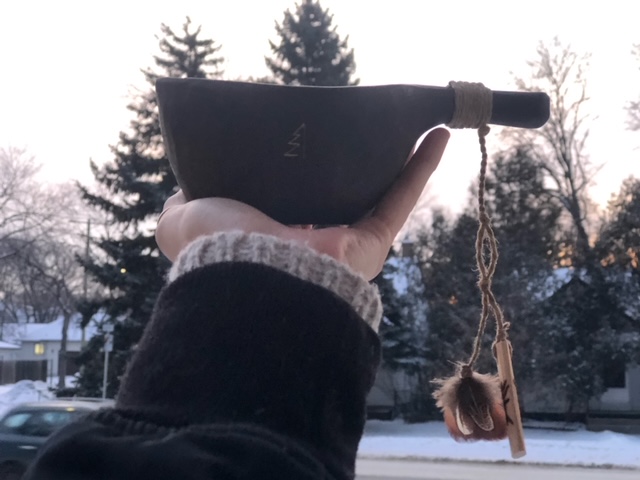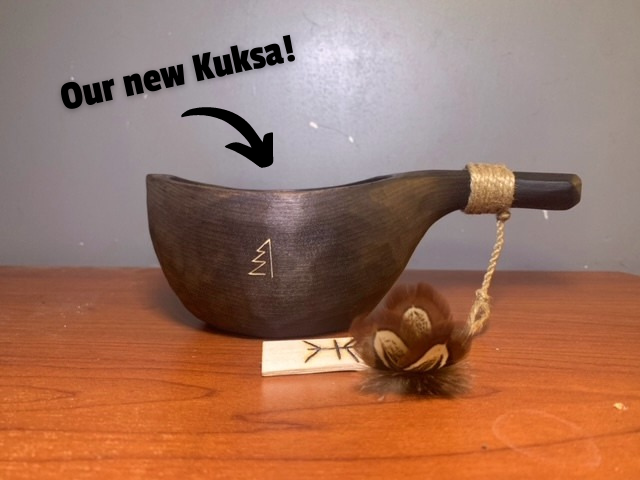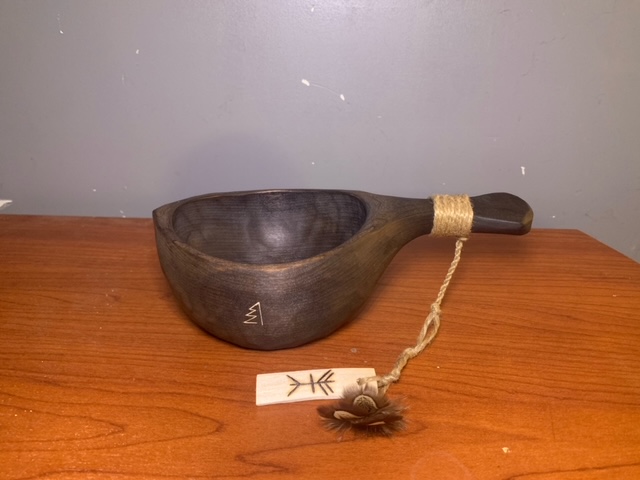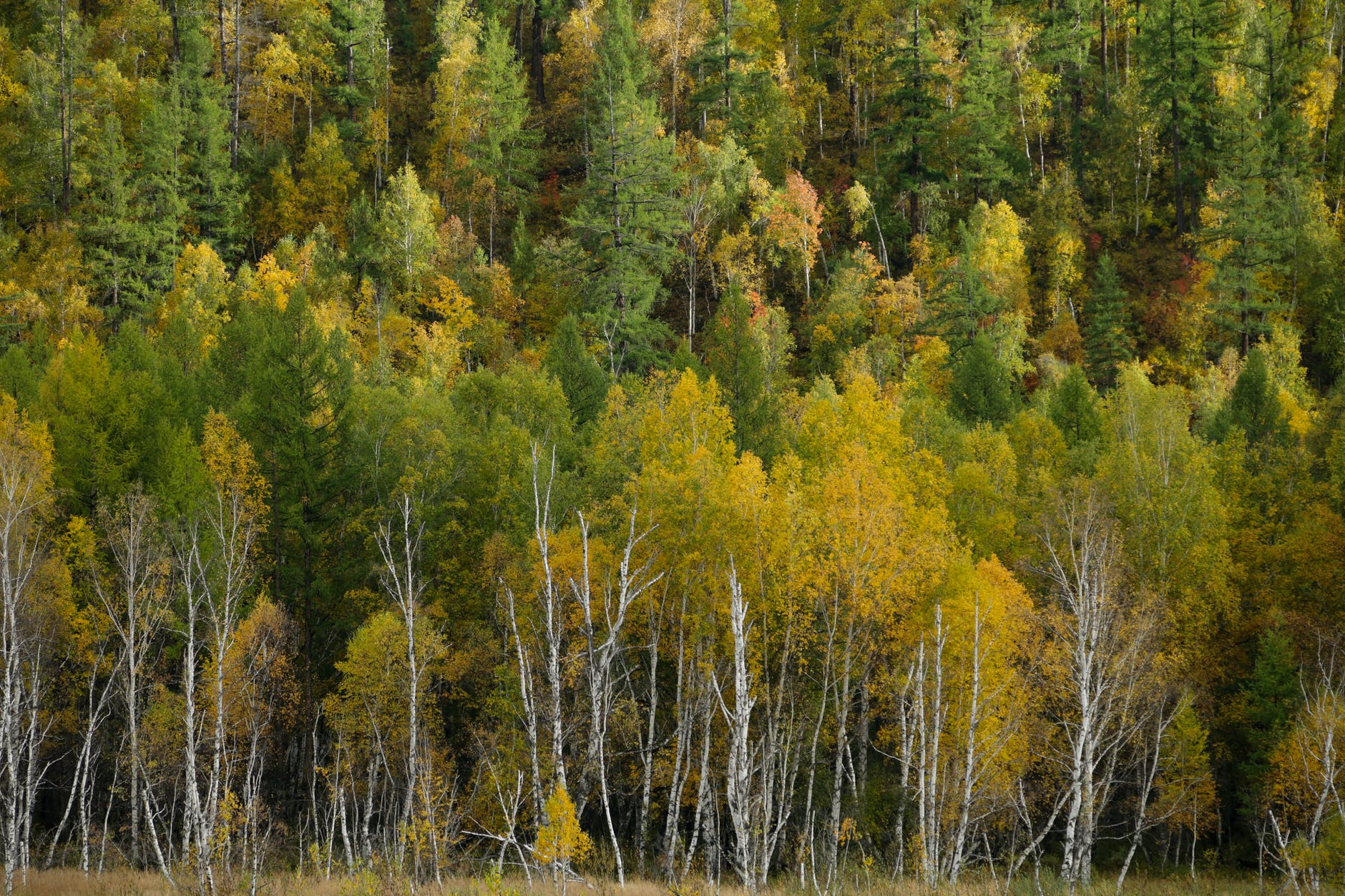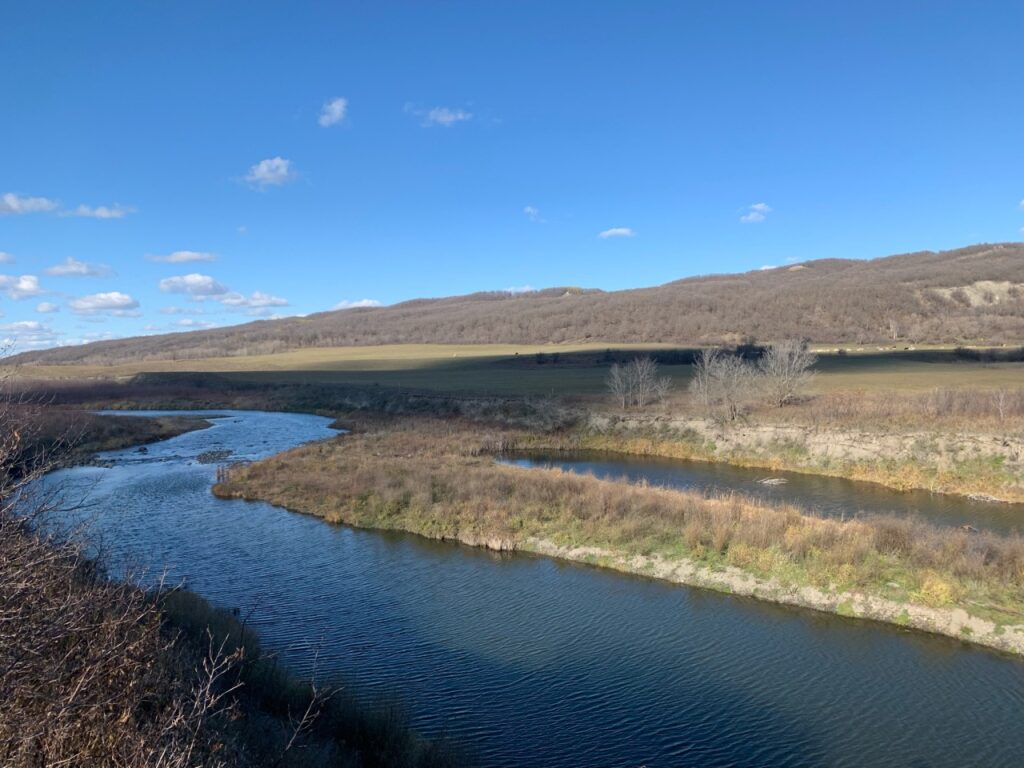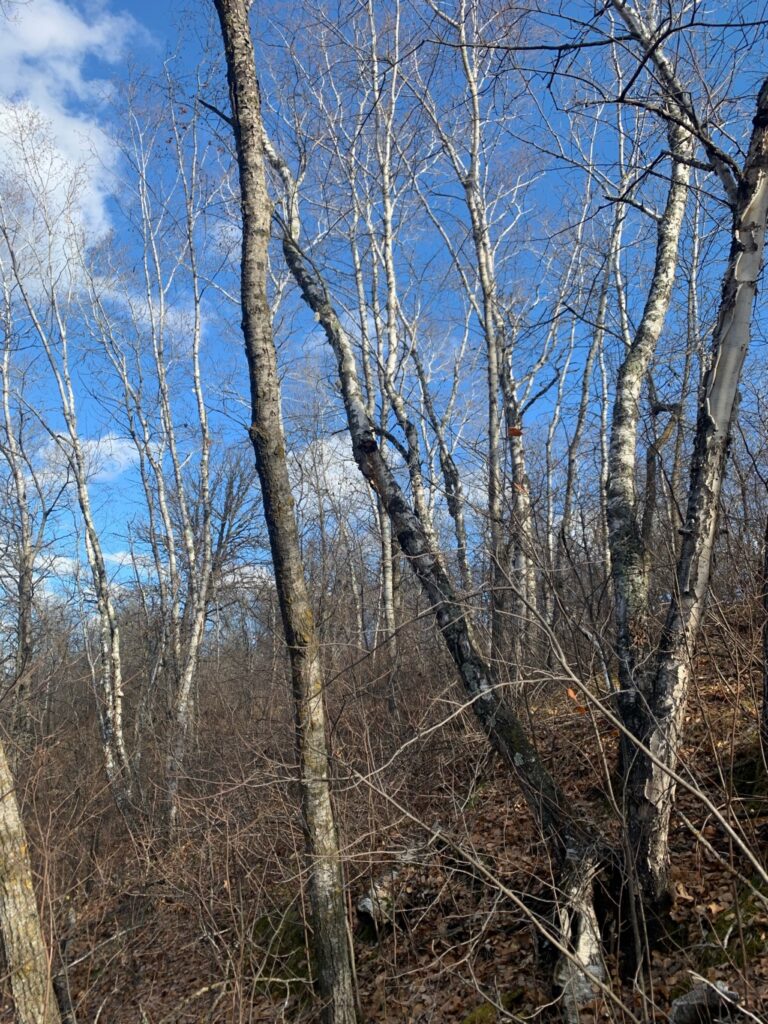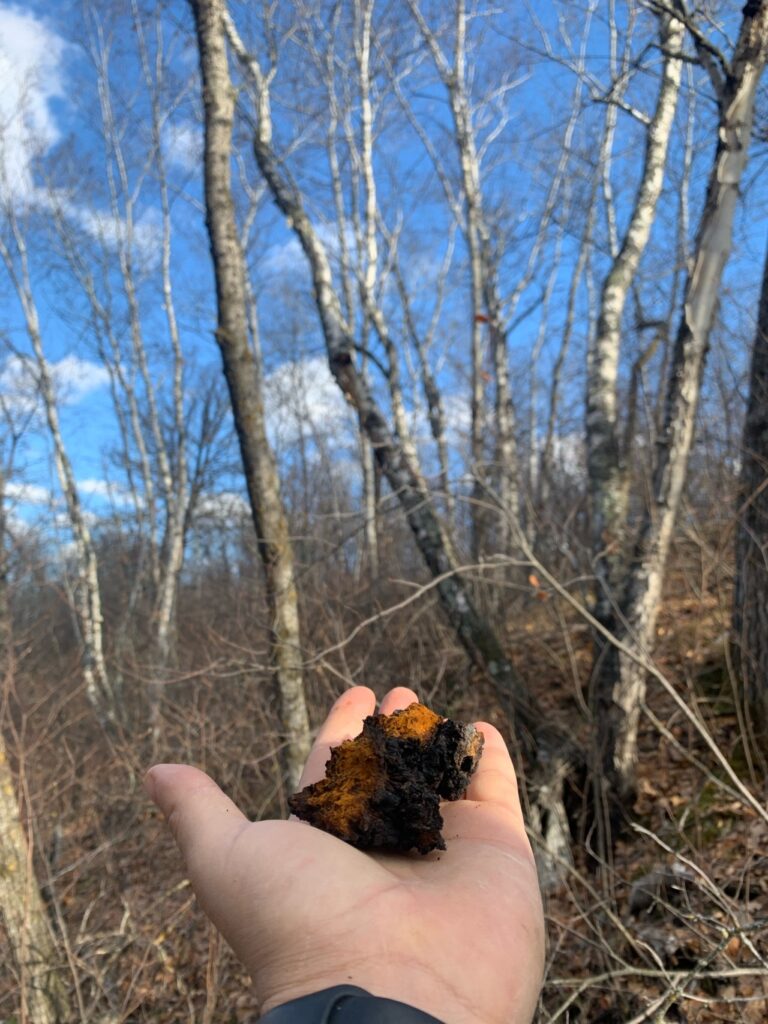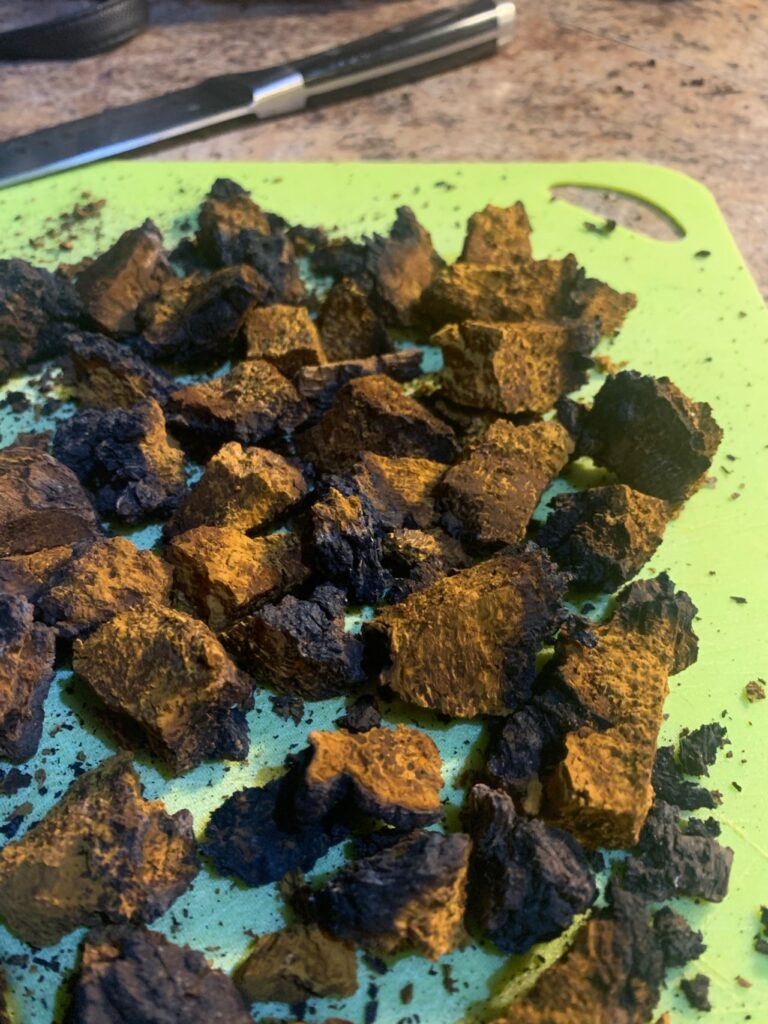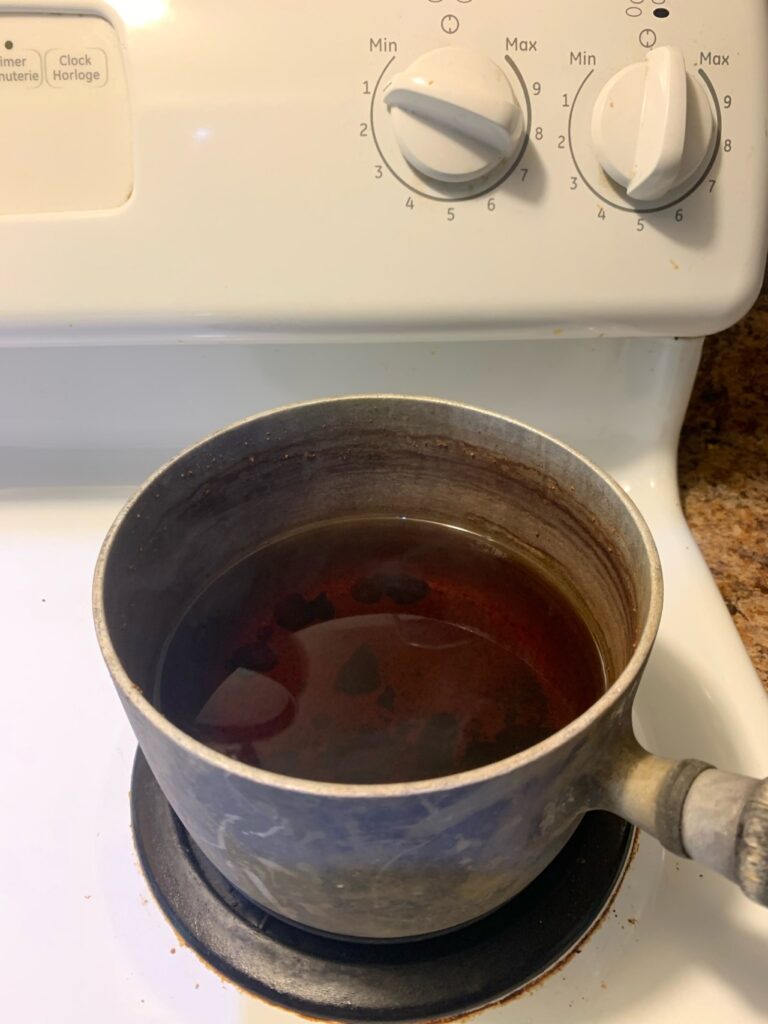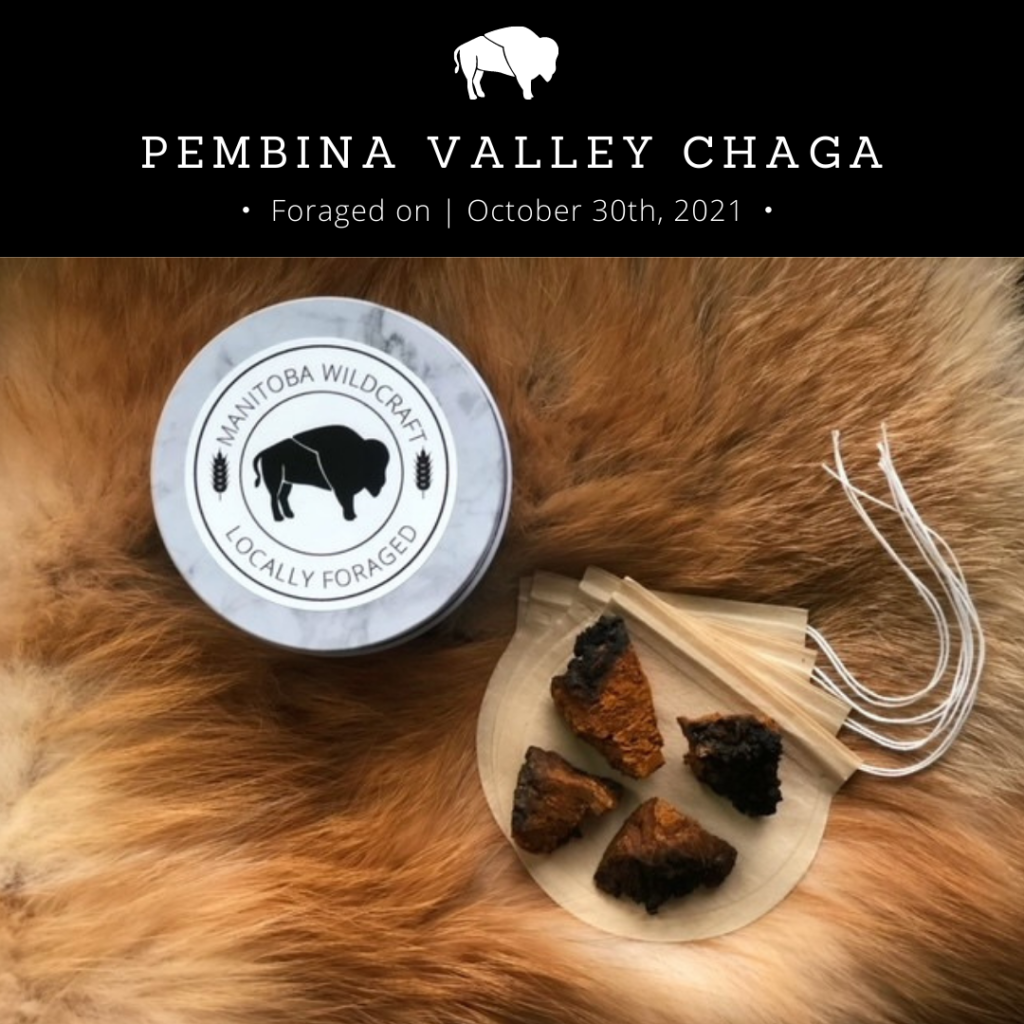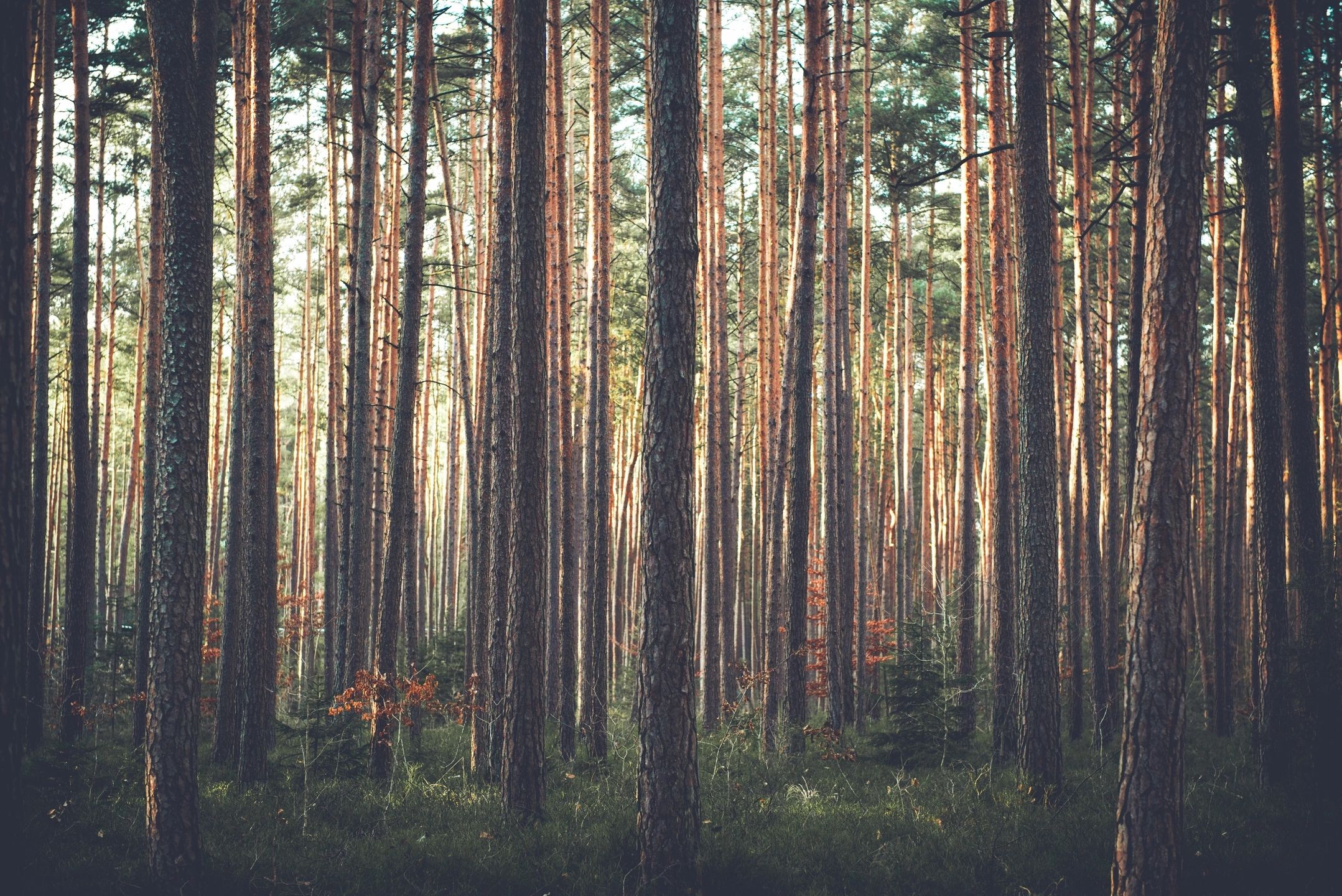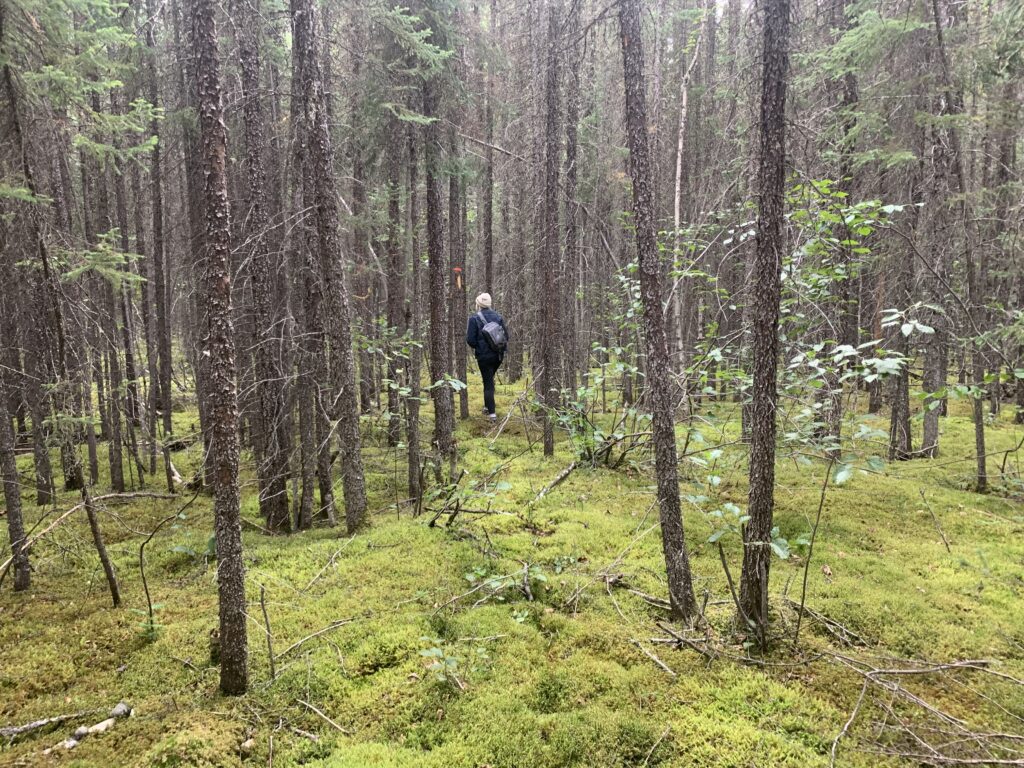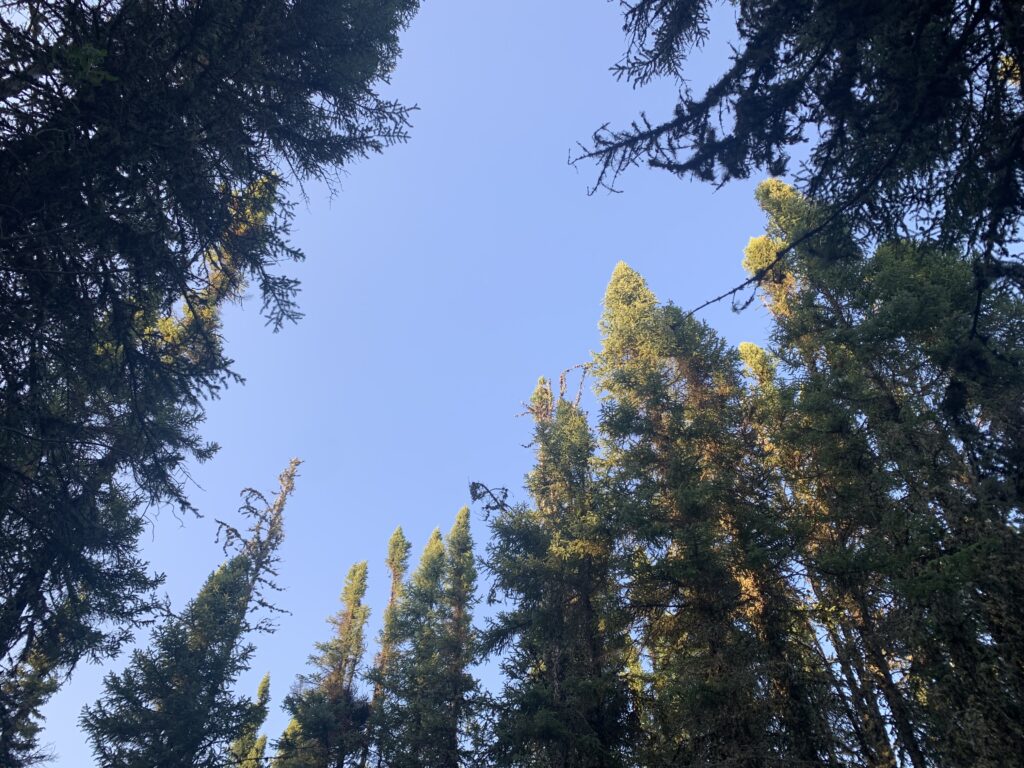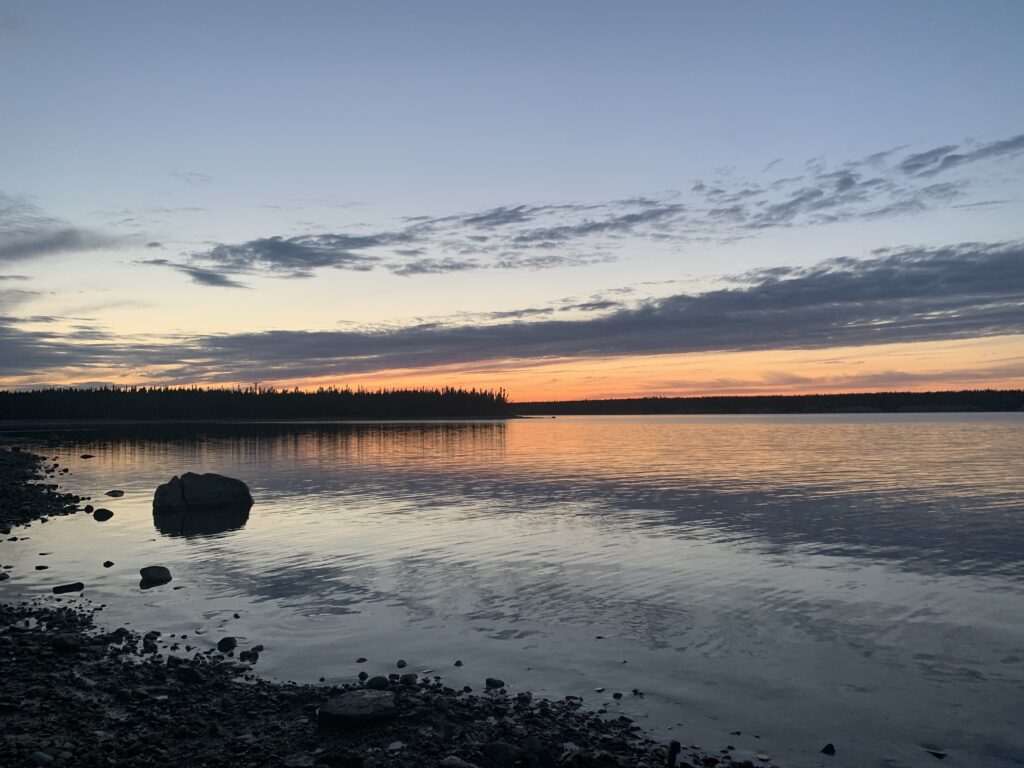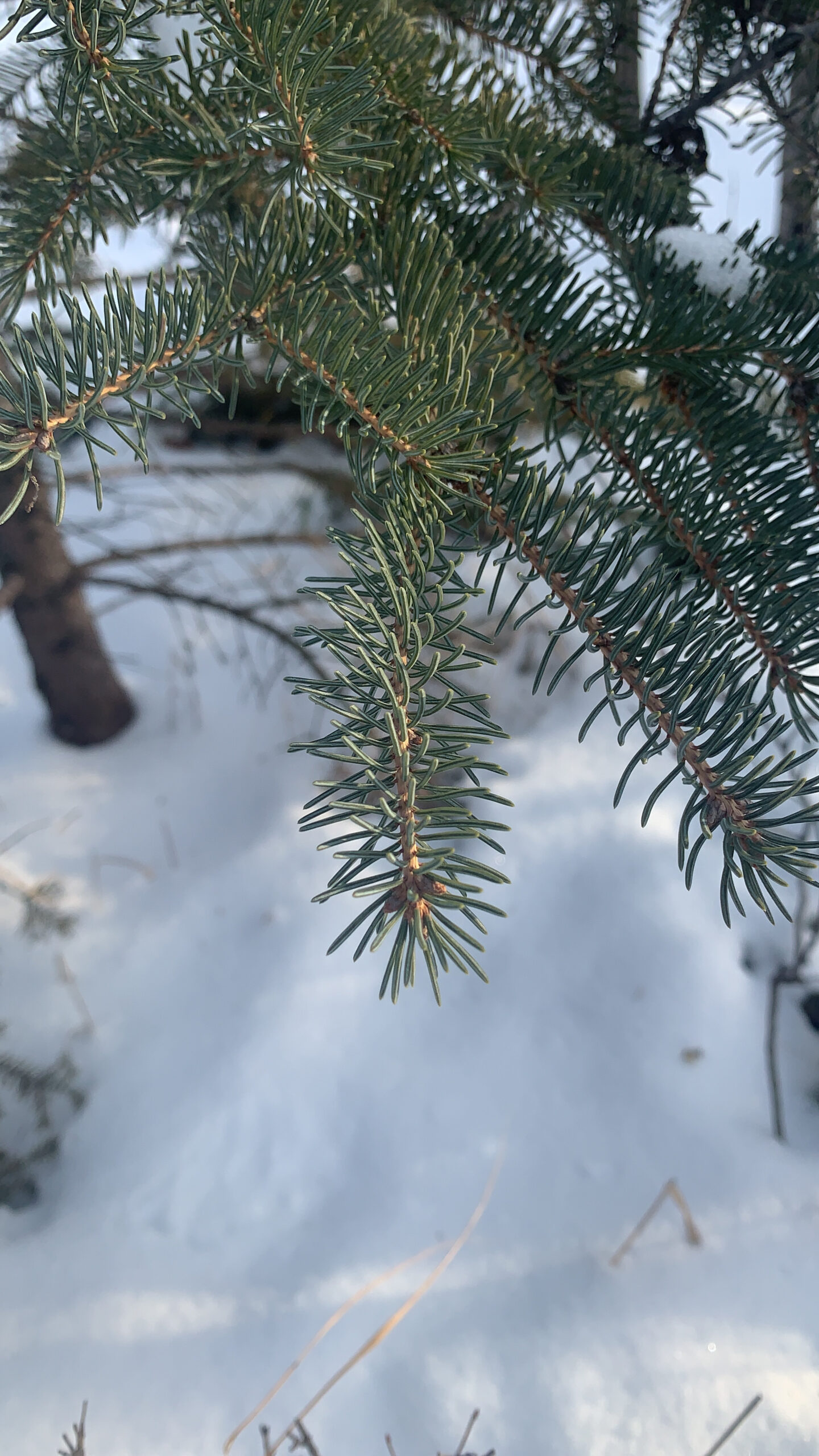
This adventure starts with the onset of Covid-19 into our household. Likely through our son’s school – and – likely the Omicron variant. This of course means, that we are hunkered down for the next couple of weeks. To fight the boredom, I had been doing reading about one of the most abundant forageable goods during a Canadian winter (our beloved spruce trees) and in particular, the white spruce. There are a few really interesting things that can be done with Spruce needles, and I suppose now is the time to give it a try!
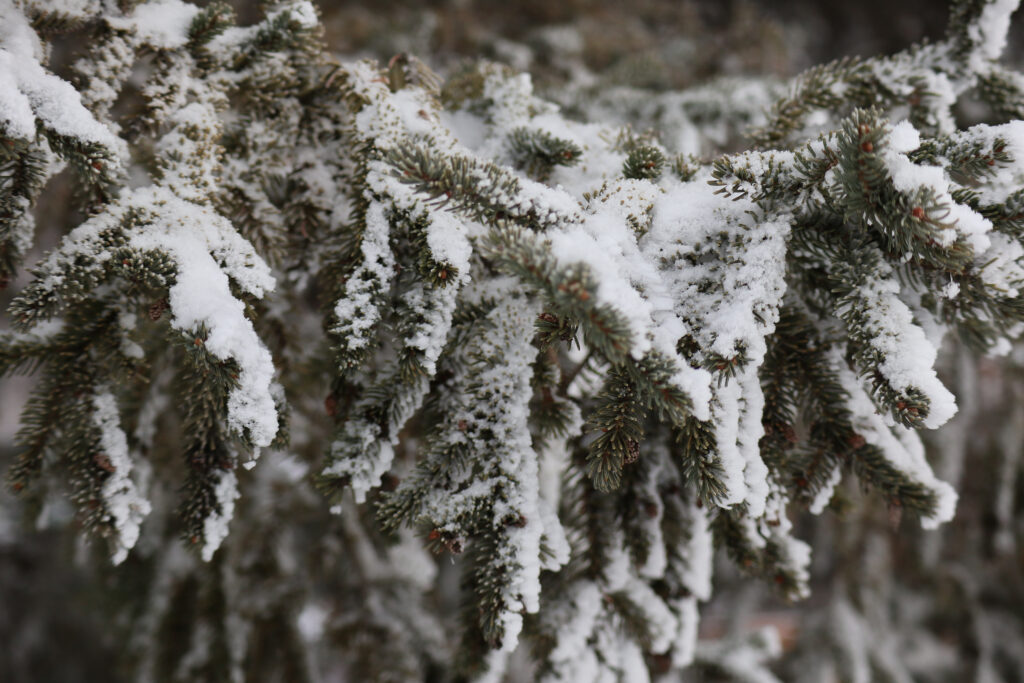
What is the White Spruce?
Excpert from Wikipedia:
Picea glauca, the white spruce,[3] is a species of spruce native to the northern temperate and boreal forests in North America. Picea glauca was originally native from central Alaska all through the east, across southern/central Canada to the Avalon Peninsula in Newfoundland. It now has become naturalized southward into the far northern United States border states like Montana, Minnesota, Wisconsin, Michigan, Vermont, New Hampshire and Maine; there is also an isolated population in the Black Hills of South Dakota and Wyoming.[4][5][1][6] It is also known as Canadian spruce, skunk spruce, cat spruce, Black Hills spruce, western white spruce, Alberta white spruce, and Porsild spruce.
https://en.wikipedia.org/wiki/Picea_glauca
Why Forage White Spruce?
Spruce trees are in abundance! Spruce also provides foraging opportunities all year round. The needles are edible and most commonly used to make a hot tea, which is steeped (not boiled) to retain its nutritional quality (we will get into that later). All parts of the tree are non-toxic. Not only can it be used to make hot tea but it can also be used in syrups, as a wild yeast starter, and can be pickled and fermented! Where to start! We will collect, the needles, some tips, bark, and sap! Food and medicine! Not only is the white spruce abundant but it is also an incredible source of Vitamin C, a great medicine for anyone who is fighting off a cold or the flu (although we are fully vaxxed anything we can do to help to fight off Covid-19, we will try!).
Where to Find White Spruce?
As we mentioned before, white spruce is everywhere. It isn’t hard to track down some conifers which make it an awesome foraged good for beginners. The only tree that is poisonous lookalike is the Yew family of evergreens (Taxus baccata). It is pretty easy to tell the difference between the different evergreens and spruce is most easily identified by its shorter four-sided needles. Here is a good guide to identifying conifers!! For our spruce harvest, we walked along the Assiniboine Forest along the edges where some of the surrounding pine trees have been slowly moving into the forest area – which is predominantly aspen.
What’s the Science?
Ok, so what is the science?? There is evidence to suggest that White Spruce was potentially the lifesaving plant known as “Addenna”, a plant that healed Cartier’s critically ill crew.
Several conifers have been considered as candidates for “Annedda”, which was the source for a miraculous cure for scurvy in Jacques Cartier’s critically ill crew in 1536. Vitamin C was responsible for the cure of scurvy and was obtained as an Iroquois decoction from the bark and leaves from this “tree of life”, now commonly referred to as arborvitae. Based on seasonal and diurnal amino acid analyses of candidate “trees of life”, high levels of arginine, proline, and guanidino compounds were also probably present in decoctions prepared in the severe winter.
Arginine, scurvy and Cartier’s “tree of life”
Don J Durzan
Aside from a healthy dose of Vitamin C, another compound that I found quite interesting was the high levels of shikimic acid, which is a key material used to synthesize Tamiflu!
Shikimic acid is a white crystalline cyclitol, which is a precursor material for industrial synthesis of the important drug, oseltamivir phosphate (Tamiflu), which is an effective drug against the H5N1 influenza virus [1], especially if administered early. According to the in vitro and in vivo studies, shikimic acid and its derivatives possess many pharmacological effects, such as antithrombotic [2], anticoagulant [3], anti-inflammatory [4], analgesic [5], antioxidant [6], anticancer [7], and antibacterial effects [8]. Serious health threats have promoted social development and the concerns over an outbreak of the disease have increased the need for shikimic acid [9]. Shikimic acid (Figure 1) was first isolated from the fruit of Illicium religiosum by Eykman in 1885 [10]. Currently, most of the shikimic acid required by the pharmaceutical industry was obtained from the fruits of Chinese plant star anise (I. verum) [11]. The fruits of this tree were reported that the content of shikimic acid ranged from 2 to 7% [12]; however, only I. verum resource could not satisfy its growing market demand as growing difficulties. Potential alternative resources of shikimic acid are thus urgently required. Shikimic acid is a widely occurring primary plant metabolite, which has been identified in some conifer needles with relative abundance distribution.
Extraction and Chromatographic Determination of Shikimic Acid in Chinese Conifer Needles with 1-Benzyl-3-methylimidazolium Bromide Ionic Liquid Aqueous Solutions
Fengli Chen,1 Kexin Hou,1 Shuangyang Li,1 Yuangang Zu,1 and Lei Yang
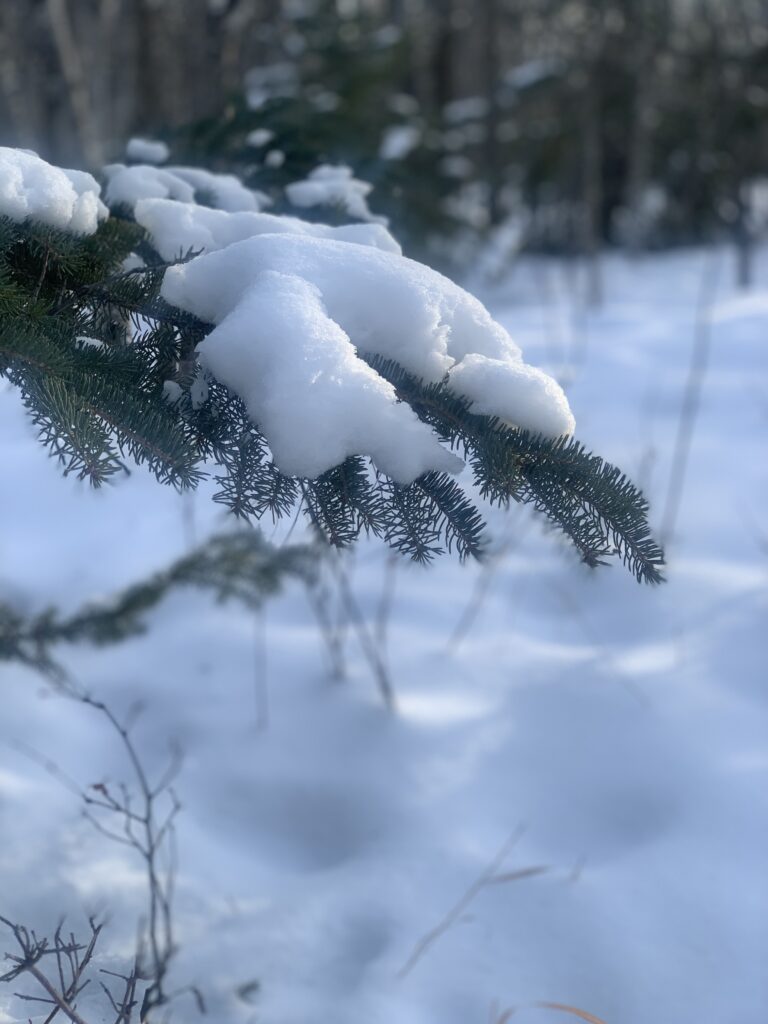
How to Prepare White Spruce Tea
Preparing white spruce tea is easy, however, one thing should be considered. It is strong medicine! A small bit goes a long way. The first time we made the tea we made it incredibly too strong. We finished a couple of cups before figuring out the exact ratio to give enough of a citrus pop without being too overwhelming. As a simple rule of thumb, a couple of sprigs the size of your thumbs in 6 cups of water is a rough idea.
This is too much:
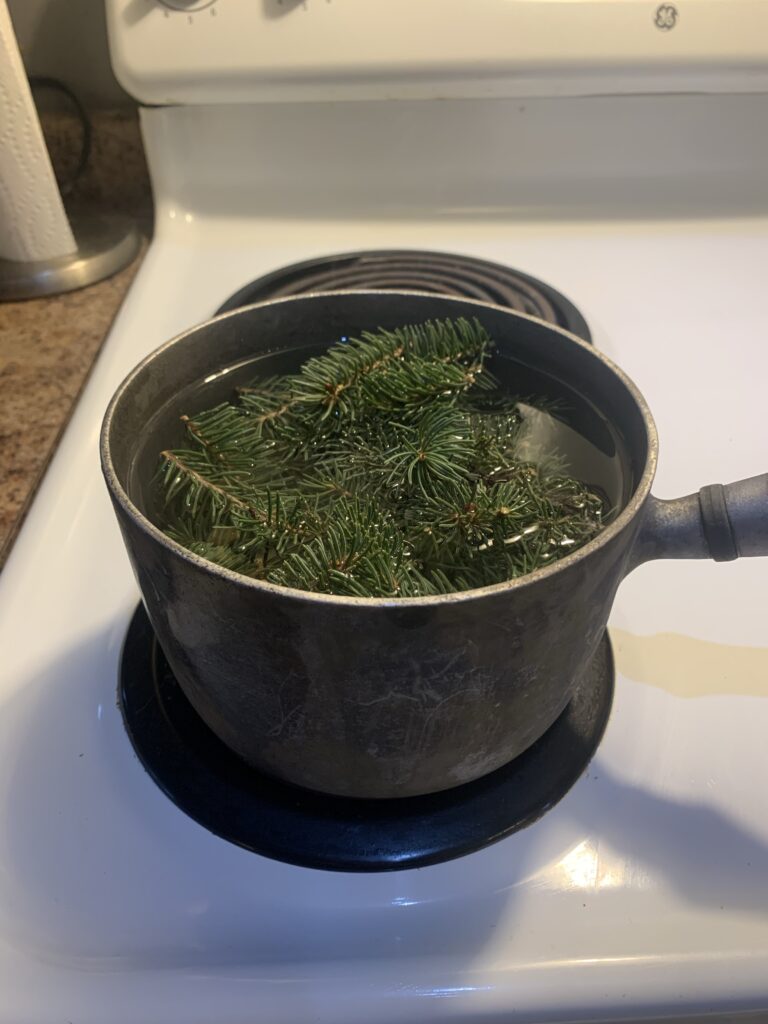
We finally landed on this recipe. One cinnamon stick, one apple, one 13g sprig of our harvested white spruce, and a tablespoon of vanilla in 6 cups of water. Bring to a simmer (do not boil as the heat will damage the vitamin C!) and let it steep. It was quite delicious and really got me thinking about more practical uses for this citrus-style flavor.
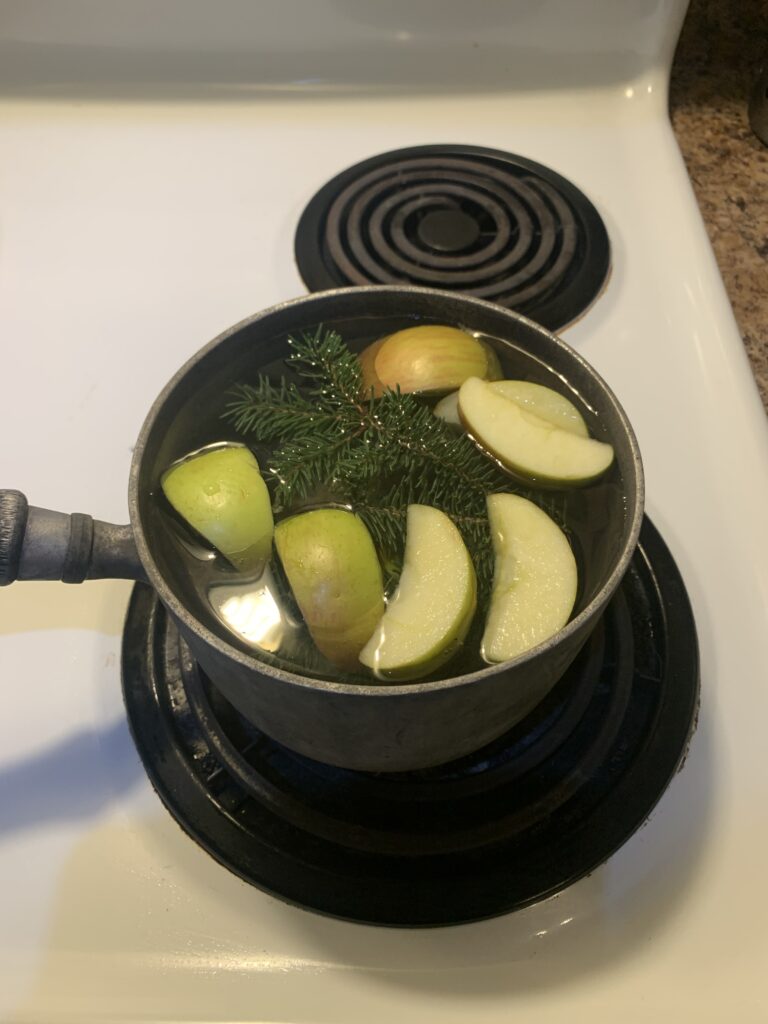
How to Make White Spruce Soda
My next recipe is a simple fermentation process. I added 1/8 c of maple syrup to a jar of water and (roughly) a cup of spruce sprigs. I want to capture the wild yeast to see if I can get a woodsy soda going on!! We are on day two! Not sure the direction I will go with this but I can’t help but think the flavors are so well suited for a fizzy pop!

Final thoughts!
Lately, I have been obsessed with this show From The Wild, filmed in Alberta by Kevin Kossowan, about the journey to rediscovering his connection to wild food. I highly recommend it. The show has been inspiring for me to go out and actually use some of the foraged goods that I often overlook, something like the spruce tree. Just as I suspected, the tea is actually quite nice and is something I can see myself making again or at least enjoying when we are out in the woods again.

